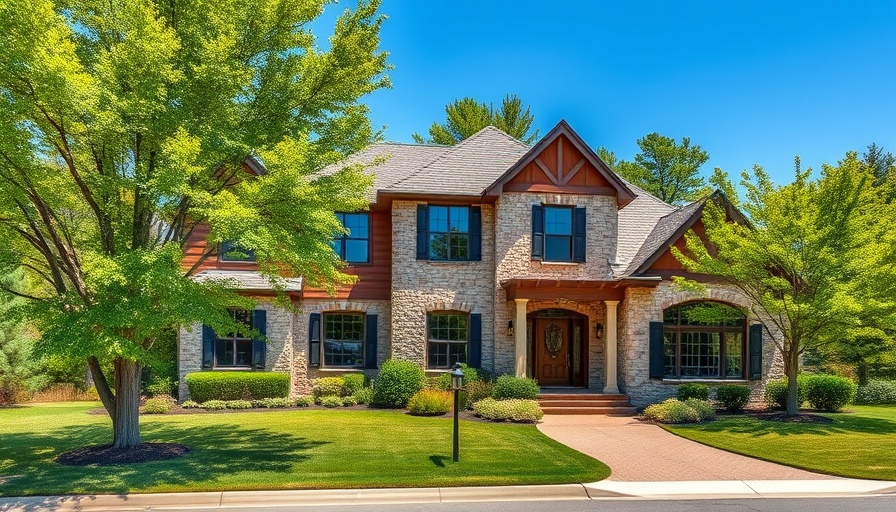
Understanding Xeriscaping: A Sustainable Solution for Arid Climates
Xeriscaping has emerged as a crucial landscaping method in an era increasingly prone to extreme weather and drought conditions. The value of understanding this technique extends beyond just aesthetics; it can significantly contribute to water conservation and sustainable living. As interest in xeriscaped yards grows, especially in arid regions or areas with recurring droughts, it’s essential to dive deeper into the benefits and strategies of this environmentally friendly practice.
The Core Principles of Xeriscaping
A xeriscaped yard isn't just a collection of drought-tolerant plants; it’s a thoughtful composition that balances sustainability with beauty. One critical aspect of xeriscaping is plant selection. Utilizing native or drought-resistant plants enables homeowners to create vibrant landscapes that require less water. According to landscape design professionals, creating a palette that offers all-year interest ensures that your yard remains attractive in every season.
Benefits Beyond Aesthetic Appeal
Xeriscaping yields a treasure trove of benefits that extend well beyond reducing water bills. The method encourages the growth of native plants, which creates habitats for local wildlife and contributes to local biodiversity. Healthier soils and reduced erosion are additional environmental rewards that reflect the wisdom of choosing xeriscaping for your landscaping needs.
Initial Investment vs. Long-Term Savings
While the initial costs of establishing a xeriscaped yard might surpass those of traditional landscaping, consider it a valuable investment. Not only do xeriscaped yards favor lower water usage—and thus reduced utility bills—after establishment, they also demand minimal maintenance. This translates to more free time for homeowners and possibly increased property value in drought-prone areas.
Overcoming the Challenges of Xeriscaping
Transitioning to a xeriscaped landscape may present some challenges. Not all homeowners may find the initial aesthetic pleasing, especially if they are accustomed to traditional lush gardens. It requires embracing a different mindset regarding beauty and function. However, with a well-thought-out design, these challenges can be addressed by selecting intriguing foliage and implementing thoughtful arrangements.
The Future of Xeriscaping in Landscaping
The trend toward xeriscaping aligns with broader climate action and sustainability goals. As extreme climate events become more common, learning how to minimize resource consumption becomes vital. Homeowners in both arid and temperate regions can adapt xeriscaping principles to suit their needs. The ongoing dialogue around sustainable practices and water conservation ensures that xeriscaping will remain relevant.
Conclusion: Make the Shift towards Sustainable Living
As the world continues to face environmental challenges, becoming proactive in our gardening practices is essential. By implementing xeriscaping techniques, we not only beautify our homes but also take a significant step toward conserving precious resources. Now is the time to consider improvements to your landscape that reflect a commitment to sustainability and environmental stewardship. Learn more about the advantages of xeriscaping, and take action in your own outdoor space today!
 Add Row
Add Row  Add
Add 




Write A Comment